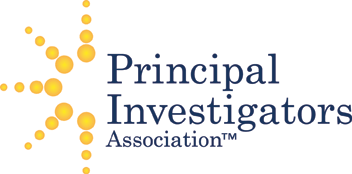No. 117: Steering Tips for NSF’s FastLane, Its Online Grant-Processing Tool
Project Reports
In early 2013, the National Science Foundation (NSF) will completely
transfer all project reporting from FastLane to Research.gov. This
means that Principal Investigators (PIs) and Co-PIs will use
Research.gov to meet all NSF project reporting requirements, including
submission of Final, Annual and Interim Project Reports and the Project
Outcomes Report. The new Project Reporting Dashboard will make it
easier for PIs, Co-PIs, and Sponsored Project Office (SPO) staff to see
which reports are due or overdue, and will provide access to all reports
submitted to NSF. Research.gov provides research-related information
and grants management services in one location. Research.gov is the modernization of FastLane, providing the next generation of grants management capabilities for the research community. LEARN MORE HERE.
Source: Research.gov
Steering Tips for NSF’s FastLane, Its Online Grant-Processing Tool
The science behind your proposal is always your top priority, but if you ignore NSF submission instructions, overlook review criteria, or wait until the last minute to file, it’s likely that your ideas won’t even be considered, says Bev Sherman, NSF senior analyst.
“We get so many proposals that we fund only those that obey the rules,” she says.
For example, you may think your project is so incredible that it deserves a five-page project summary. But if the program solicitation says to keep it to one page — as is the case for most NSF grants — anything else is chucked into the proverbial dustbin.
“The project summary cannot be any longer than one page. If it doesn’t meet that requirement, you’re out the door. It will not go any further; it will be returned to sender,” says Sherman.
“You must follow both the PAPP (Proposal and Award Policies and Procedures Guide) and the solicitation so that you get everything right,” she warns applicants.
Sherman covers these and other specifics in a workshop she presents at institutions, called Use FastLane to Prepare and Submit Your Proposal to the National Science Foundation.
Address 2 key criteria separately
Another problem Sherman hears from reviewers is that many applicants fail to identify and clearly address NSF’s two main judging criteria — Broader Impact and Intellectual Merit. All proposals submitted through FastLane must do so or be disqualified.
Each needs to be under its own itemized heading. “If you don’t itemize it, we return it,” Sherman says.
The Intellectual Merit section calls for an explanation of how one’s research will advance knowledge and explore transformative concepts, but scientists should keep their explanations as simple as possible.
For instance: If your study is aimed at discovering a new application for solar energy, don’t go into great detail about its current uses or well-known challenges to other applications. Instead, perhaps simply say, “We believe these experiments will show that solar energy can be a cheaper, cleaner, and longer-lasting power source for ABCs and XYZs — an application not considered before but one that would have an obvious major benefit to society.”
“If you write it too complicated their [the reviewers’] eyes are crossing and they’ll say, ‘Let’s go on to the next one,’” Sherman says.
Barbara Houtz, director of outreach at the Eberly College of Science at Pennsylvania State University, helps PIs there write the Broader Impact section of their proposals. (She is a former NIH reviewer but now works with the NSF program.)
She says many PIs either overreach with an overly ambitious Broader Impact program or aren’t ambitious enough in reaching under-represented groups.
Broader Impact has five main components that a proposal must address: 1) advance discovery and promote learning; 2) broaden participation of under-represented groups; 3) enhance infrastructure for research and education; 4) disseminate research results; and 5) explain societal benefit.
Aim to impact under-represented groups
Houtz starts by helping grant-seekers pick their audience for Points 1 and 2 above — promoting learning and reaching out to under-represented groups, which could be high schools or small colleges with high minority enrollment or in economically deprived areas.
A mistake some PIs make, she says, is creating “broader impact” programs (in their research area) that benefit the most advanced high-school students from the top schools.
“I have a lot of faculty who are not American, so they are completely at a loss as to what the American education system is like. They don’t see all the kids the system has failed. I try to push them into the schools that are failing,” Houtz says.
Therefore her Outreach Office helps PIs create and present science and math education programs for targeted audiences. This includes coordinating science camps, a variety of science activities at local schools, and the opportunity for groups to tour university laboratories.
Avoid rush-hour filing
Houtz’s No.1 piece of advice for submitting through FastLane: Do so at least a day in advance.
If the grant deadline is 5 p.m. and you’re online trying to submit at 4:45 p.m., there are so many people trying to submit at the same time that you may encounter problems with the system, she says.
She’s heard of FastLane crashing in the midst of someone submitting a grant close to the deadline.
If you’re working close to deadline, FastLane technical support contact information is 1-800-673-6188 or e-mail [email protected]. You may submit a request for technical assistance at https://www.fastlane.nsf.gov/servlet/gov.nsf.fastlane.contact.Action.
NSF Grant Application Mentor: An Educational How-to Series
Limited-Time Offer Until October 31st:
Purchase the 7-Report Series at an introductory rate of
ONLY $299! (Reg. Price $699).
Learn More!
Comments (0) | Read More...




